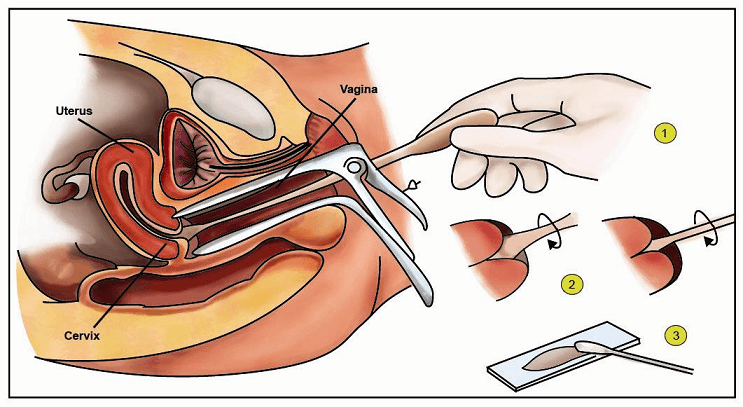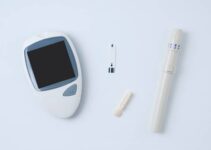A pap smear, which is also called a Pap test, is a technique to test for cervical cancer in females. This test is used to detect the presence of cancerous cells in the cervix. Usually, a Pap smear involves amassing cells from your cervix, the narrow end of your uterus seat just at the top of your vagina.
Pap smear is really important as detecting cervical cancer timely gives the patient a better chance at a cure. With the importance of pap smear already widely appreciated, this post takes a look at how much the process goes for in Nigeria today.

Cost of Pap Smear Test in Nigeria
The overall cost of pap smear in Nigeria is dependent on some core factors, which usually includes the location of the clinic or hospital, the type of hospital and other similar factors. Generally, Pap smear is not expensive.
On the average, cost of complete pap test vary between N3,500 – N8,000 depending on the factors already stated above. Usually, this test is more expensive in private facilities compared to federal institutions.
What is Pap Smear?
Pap tests, which is usually called Pap smears, are very vital tests that help discover abnormal cells on the cervix that could potentially lead to cervical cancer. The test helps discover cell changes triggered by HPV, although they don’t detect HPV.
Pap tests is always advised to be a part of women’s regular check-up. During a Pap test, the medical doctor or nurse inserts a metal or plastic speculum into the vagina. The speculum releases up to separate the walls of the vagina to allow them get into the cervix. A small sampler, usually a tiny spatula or brush, is then inserted to mildly collect cells from the cervix. The cells are then sent to a lab for adequate testing.
Pap tests usually take a few minutes. They do not hurt, but in some cases, patients have complained about feeling some discomfort or pressure when the doctor or nurse releases the speculum inside them. Some also complain of feeling a light itching when they take cells from the cervix.
After the Pap smear, the patient can continue their daily activities without restrictions. Based on the type of Pap testing the patient is undergoing, the medical doctor moves the cell sample gathered from the cervix into a ampule containing a special liquid to preserve the cell sample, this process is the liquid-based Pap test. The doctor could also collect the sample into a glass slide, this is known as conventional Pap smear. The samples are then moved to a lab where they are observed under a microscope to inspect for basic characteristics in the cells that could show cancer or a precancerous condition. Patient can always ask the medical doctor when to expect the result of the test.
How Often Should One take Pap Smear?
Generally, medical doctors and practitioners recommend iterating Pap testing every three years for women between the ages of 21 and 65. Women older 30 years are advised to consider taking the Pap testing every five years, especially if the process is combined with testing for HPV. If patients have some risk factors, the doctor could recommend more frequent Pap smears, irrespective of the age of the patient. Some of these risk factors include:
- A diagnosis of cervical cancer or a Pap smear that exposed precancerous cells.
- Exposure to diethylstilbestrol (DES) before birth
- HIV infection
- Debilitated immune system due to cases like organ transplant, chemotherapy or lingering corticosteroid use
- A history of smoking
It is important for the patient and the doctor to discuss the pros and cons of Pap smears and agree on which is best based on the patient’s risk factors.
Reporting Pap Smear Result
A pap test result may either be normal or abnormal, depending on the presence or absence of cancerous cells in the cervix. An abnormal pap test result does not necessarily indicate the patient has cancer, it only suggests there could be traces of cancerous cells and a need to do further test. The doctor could then recommend the patient takes the pap test more often and could also request for a procedure known as colposcopy.
With this procedure, the doctor will use light and intensification to loo through the cervix and examine it better and may take a biopsy, this is usually a small part of your cervical tissue for further testing. It should be noted that the Pap smear results are 80 percent accurate and are not a hundred percent.
Risks Associated With Pap Snear
Generally, a Pap smear is a harmless way to screen for cervical cancer. Nevertheless, a Pap smear is not completely perfect as there are risk associated with the process. It is possible to have false-negative results — which could mean that the test shows no abnormality, although the patient has some traces of abnormal cells.
A false-negative result does not necessarily mean a mistake was made though. Here are some factors that can result in situations like this:
- An insufficient collection of cells
- A small number of irregular cells
- Blood or incendiary cells concealing the abnormal cells
While it is thinkable for abnormal cells to go unobserved during the pap smear, it is still very dangerous. Cervical cancer develops in a few years. This is the importance of having a series of tests as if one test does not discover the abnormal cell, there is a high chance the next test will.
Related Posts
- Me Cure Nigeria Price List (April 2024)
- Synlab Price List (April 2024)
- Omron Blood Pressure Machine Prices in Nigeria (2024)
- Cost of Dialysis in Nigeria (April 2024)
- Cost of Kuding Tea in Nigeria (2024)
- The Cost of Hysteroscopy in Nigeria (2024)
- Cost of MRI in Nigeria (April 2024)
- Cost of PCR Test in Nigeria (April 2024)
- Cost of IVF in Nigeria (2024): All You Need to Know
- Fohow Products Price List (April 2024)
- The Cost of Kidney Transplant in Nigeria (2024)
- Cost of Endoscopy in Nigeria (April 2024)
- Cost of Dental Braces in Nigeria (April 2024)
- Best Hospitals for Kidney Transplant in Nigeria (2024)
- Nordica Fertility Centre Price List (April 2024)
- Cost of Laparoscopy in Nigeria (April 2024)
- Cost of Pap Smear in Nigeria (April 2024)
- Cost of Medical Exam for Canada Immigration in Nigeria
- Cost of Ultrasound Scan in Nigeria (April 2024)
- Cost of DNA Test in Nigeria (April 2024)
- Cost of Treating Hepatitis B in Nigeria (2024)
- Afriglobal Medicare Price List (April 2024)
- The Cost of IUI in Nigeria (2024)
- Sphygmomanometer Prices in Nigeria (April 2024)
- Glucometer Prices in Nigeria (April 2024)
- Cost of Fibroid Surgery in Nigeria (April 2024)
- Cost of HSG Test in Nigeria (April 2024)
- Cost of Tuberculosis Test in Lagos Nigeria (April 2024)
- Cost of Radiotherapy in Nigeria (April 2024)
- Cost of Chemotherapy in Nigeria (2024)





